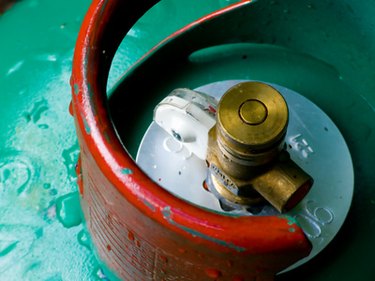
Gas regulators control the overall amount of pressure in a combustible gas line. All gas appliances require low gas pressure for safe and efficient operation. Sizing the correct gas regulator is critical for the safe operation of these devices. If the gas regulator is too large, too much gas will flow into the appliance and may cause an explosion. If the gas regulator is too small, the appliance will operate inefficiently or not at all. There are two basic types of gas regulators, one used for natural gas and the other for propane.
Step 1
Obtain the specifications included with the operational instructions for the gas appliance. The specifications should include the British Thermal Unit (BTU) or the Standard Cubic Foot (SCF) for gas consumption.
Video of the Day
Step 2
Size the gas regulator according to the gas inlet pressure. Your local gas utility will have the inlet pressure listed on the main gas meter for your home or you can call them for the information.
Step 3
Read the outlet pressure required for the appliance on the specification sheet from Step 1. The gas regulator must be sized for the proper outlet pressure to operate the appliance.
Step 4
Size the regulator according to both the inlet and outlet gas pipe diameter. In most cases, the inlet and outlet pipe diameters may have to be the same.
Step 5
Designate which type of gas you are connecting to, natural gas or propane.
Tip
Follow all local utility regulations when sizing a gas regulator.
Many local authorities may require an inspection before the gas can be turned on for appliance operation.
Video of the Day